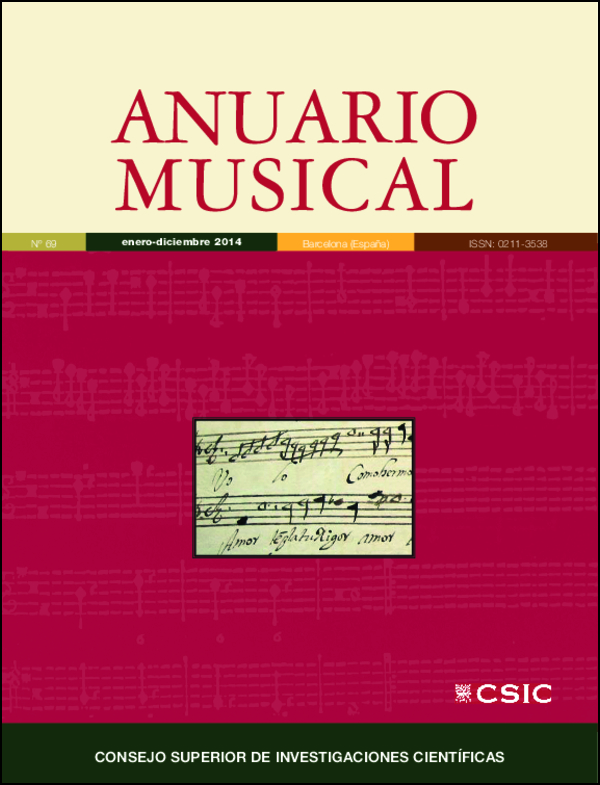Ecclesiastical Tones versus Major-minor key. Juan Bermudo: performance Practice and Listening Habits in the 16th Century
DOI:
https://doi.org/10.3989/anuariomusical.2014.69.166Keywords:
Mode, musica ficta, Antonio de Cabezón, Cristóbal de Morales, Juan Vásquez, Miguel de Fuenllana, tablatureAbstract
As it is well-known, the change of the tonal system, which introduced the emergence of the harmonic tonality, lies in the 16th century. Until then, the diatonic tonal system was prevalent and based upon two theoretical pilars: firstly, upon the hexachord-system and secondly, upon the system of modes. One central aspect in Juan Bermudo’s treatise Declaración de instrumentos musicales (Osuna, 1555) is his observation that the musical practice of his time is in contradiction with these theoretical fundaments. With the aim to conciliate traditional theory and contemporary practice, he proposes some new concepts which are illustrated also by musical examples from Spanish composers.
Downloads
Downloads
Published
How to Cite
Issue
Section
License
Copyright (c) 2014 Consejo Superior de Investigaciones Científicas (CSIC)

This work is licensed under a Creative Commons Attribution 4.0 International License.
© CSIC. Manuscripts published in both the print and online versions of this journal are the property of the Consejo Superior de Investigaciones Científicas, and quoting this source is a requirement for any partial or full reproduction.
All contents of this electronic edition, except where otherwise noted, are distributed under a Creative Commons Attribution 4.0 International (CC BY 4.0) licence. You may read the basic information and the legal text of the licence. The indication of the CC BY 4.0 licence must be expressly stated in this way when necessary.
Self-archiving in repositories, personal webpages or similar, of any version other than the final version of the work produced by the publisher, is not allowed.














